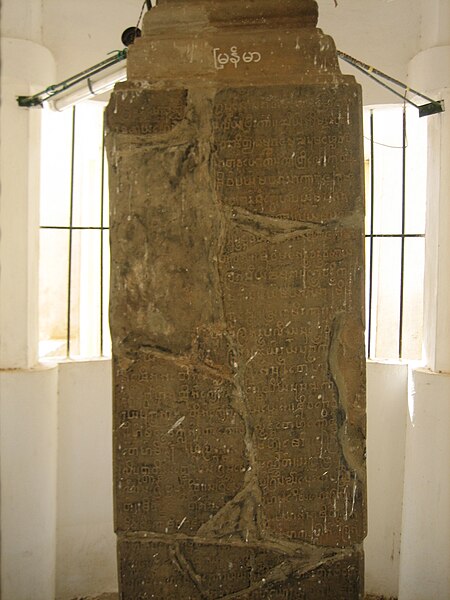The Toungoo dynasty, and also known as the Restored Toungoo dynasty, was the ruling dynasty of Burma (Myanmar) from the mid-16th century to 1752. Its early kings Tabinshwehti and Bayinnaung succeeded in reunifying the territories of the Pagan Kingdom for the first time since 1287 and in incorporating the Shan States for the first time, in addition to including Manipur, Chinese Shan States, Siam and Lan Xang. At its peak, the Toungoo Empire was the largest and strongest empire in Southeast Asia. However, it collapsed in the 18 years following Bayinnaung's death in 1581.
The King of Toungoo in Pegu receives an envoy (17th century)
Burmese is a Sino-Tibetan language spoken in Myanmar, where it is the official language, lingua franca, and the native language of the Bamar, the country's principal ethnic group. Burmese is also spoken by the indigenous tribes in Chittagong Hill Tracts in Bangladesh, and in Tripura state in India. The Constitution of Myanmar officially refers to it as the Myanmar language in English, though most English speakers continue to refer to the language as Burmese, after Burma—a name with co-official status that had historically been predominantly used for the country. Burmese is the most widely-spoken language in the country, where it serves as the lingua franca. In 2007, it was spoken as a first language by 33 million. Burmese is spoken as a second language by another 10 million people, including ethnic minorities in Myanmar like the Mon and also by those in neighboring countries. In 2022, the Burmese-speaking population was 38.8 million.

The Myazedi inscription, dated to AD 1113, is the oldest surviving stone inscription of the Burmese language.
Sampling of various Burmese script styles



